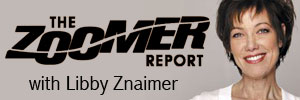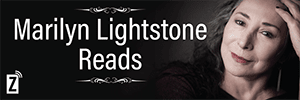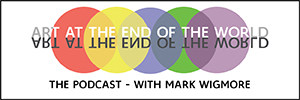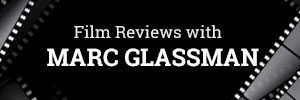Film Reviews: The Zone of Interest & Anselm

German Greatness and Terror
The Zone of Interest & Anselm
By Marc Glassman
The Zone of Interest
Jonathan Glazer, dir. and script based on the novel by Martin Amis
Starring: Christian Friedel (Rudolf Höss), Sandra Hüller (Hedwig Höss), Johann Karthaus (Claus Höss), Nele Ahrensmeier (Inge-Brigitt Höss)
The Zone of Interest deservedly won the Grand Prix at Cannes earlier in the year. This is the scariest Holiday movie ever made because it’s so chilling and so real. It’s a challenge to write “go see it,” but you should. That’s right, this is an exhortation to spend a couple of hours at the Nazis’ most infamous concentration camp, Auschwitz. Don’t worry—you won’t see dead bodies, but you will experience horror. All rendered in pleasing images that may not let you sleep easily at night.
There’s a cliché in reviews that you’ve never seen a particular Holocaust film like this one before, but, in this case, the old expression is correct. The Höss family, Hedwig and Rudolf and their kids are leading an idyllic life–eating well, entertaining guests—while next door, death is being meted out at Auschwitz. Shot in black and white, the lives of the Germans caught up in the harshest part of the Nazi regime are exposed with pitiless dispatch.
The brilliant Sandra Hüller (Germany’s Meryl Streep) stars as the cold-blooded Hedwig who is more than matched by Christian Friedel as her husband Rudolf, the commandant of Auschwitz. They are the nicest, blandest couple you can imagine—concerned about their meals and the cleanliness of their house. Their five children barely act out—one is a bit dreamy—as they go to school and play with each other with no fuss or bother. We see the family at a picnic, which couldn’t be less uplifting or entertaining.
Hannah Arendt coined the expression “the banality of evil” to characterize people just like the ones that Hüller and Friedel play in this profoundly unsettling narrative. As the commandant, Rudolf deals with guests who have proposals, complete with maps and drawings, for making the camp’s killing machines more effective. The conversations on these matters are purely technical; no one is interested in the human element. Meanwhile, Hedwig has other wives over for lunch or snacks, talking about their children and the weather and families—as one does in polite society. Her main interest is in making their garden a spectacular success; after all, everyone needs a hobby.
The most astonishing element in Zone of Interest is that we see nothing of the inside of Auschwitz but what we hear—gun shots and shouts and groans—and what we notice, especially the smoke coming from the chimneys, is more than enough to terrify anyone watching this truly extraordinary film. Even though their household is literally next door to the camp, neither the mother nor her children ever express interest in seeing what is going on inside.
Director Glazer and his production designer Chris Oddy recreated the Höss home perfectly, even down to the garden. Every attempt was made to render the circumstances of a German couple living next to Auschwitz in 1943 absolutely correct, as it would have been back then. Glazer worked with the actors to make their lives as pure, affectless, and unemotional as it was for the Höss family during the Nazi regime.
The effect is chilling: you see the pure faces of evil. These are people who don’t care about anything but themselves and following the orders of a regime that is dedicated to conquering the world and killing those whom they consider to be beneath contempt. Glazer has created an airless, inhuman world and let us in to view it for a couple of hours. This is, arguably, the film of the year. You may not enjoy it but it’s important to see The Zone of Interest.
Anselm
Wim Wenders, director
Featuring: Anselm Kiefer, Daniel Kiefer, Anton Wenders
That Anselm Kiefer is in the top echelon of contemporary artists is incontestable; whether he ranks as number one in anyone’s rankings is purely a matter of taste. (He’s my favourite for reasons that may prove obvious as you read this piece.) Kiefer’s paintings and sculptures are monumental and confrontational in the manner of many extraordinary German artists and yet his philosophy is profoundly anti-Fascist, creating a tension that adds complexity to whatever he makes. Wim Wenders, like Kiefer, born in Germany in 1945, has wrestled with the past in such works Wings of Desire and Paris, Texas, and has his own problematic relationship with Germany. (Both have spent years making work outside of the country). The pairing of the two for the film Anselm, Wenders as documentarian and Kiefer as subject, seems inevitable especially as they are such good friends that Wenders cast the painter’s son, Daniel, in faux newsreel scenes of him as a young artist and the director’s grandnephew Anton Wenders as Kiefer as a child.
Anselm is another successful foray by Wenders into 3-D, the first being his documentary on the revolutionary choreographer Pina Bausch. Like Bausch, Kiefer’s complex work is textured and, more than most artists, it is highly layered with materials like straw and ash and metals being integral elements along with paint in his massive landscapes. Several scenes show Kiefer, dressed in his characteristic black shirt and pants, burning and breaking painterly elements, including canvases, to make the work better. We see him and his assistants in huge warehouses engaged in “deconstructive” practices, all acting with solemnity, knowing that they are creating monumental pieces that carry the weight of art and history.
Kiefer’s characteristic paintings are huge vistas, which use a dark palette apart from huge swaths of yellow, to depict a universe gone awry. To call them beautiful seems bizarre and yet they are so overwhelmingly painted that they are gorgeous to view. Wenders, judiciously using 3 and 2-D, renders the works brilliantly. Nor does he ignore his role as a proper documentary filmmaker. While Wenders gives us very little about Kiefer’s private life, the audience does find out about how his philosophy of art making was formed.
The major names in the formation of Kiefer’s cosmology are Paul Celan, Martin Heidegger and his mentor, Joseph Beuys. All are heavily influenced by their relationship to the Nazis. Celan, the brilliant poet, was Jewish and although he survived in a Nazi labour camp, his parents perished in the Holocaust. His poem Todesfuge (Death Fugue) was inspired by the concentration camps and is extraordinary linguistically; it has been made into songs and performance pieces. Heidegger, the eminent philosopher whose contributions to hermeneutics, phenomenology and existentialism are extraordinary, infamously joined the Nazi Party although he had an affair with one of his students, Hannah Arendt, the Jewish philosopher and creator of the term “the banality of evil.” Beuys had fought for the Nazis during World War Two but reinvented himself as a teacher and performance artist, who believed in the role of art as a political and humanistic tool for the betterment of the world.
Kiefer’s art is that of someone who has confronted the evils of the past and wants to expose them to the world. His work is replete with the rich heritage of Norse and Teutonic mythology and a fierce knowledge of Greek tragedy. Kiefer’s sculptures often have the shape and density of huge books, filled with the texts of the past greats. They’re often placed on shelves that seem fit for libraries or archives of giants from an ancient civilization. Everything is huge, offering the sense of a Romantic time of great gods now lost to us.
Wenders conveys this all to us in precise images and fluid camerawork. He is less successful in giving us an interpretation of Kiefer as a man-child still fighting against all odds to reveal his truths to the world. Perhaps his love for the great painter makes it hard for him to avoid a grandiloquent finale to the film. Nevertheless, Anselm is a film worthy of the man and an extraordinary portrait of a great artist.











